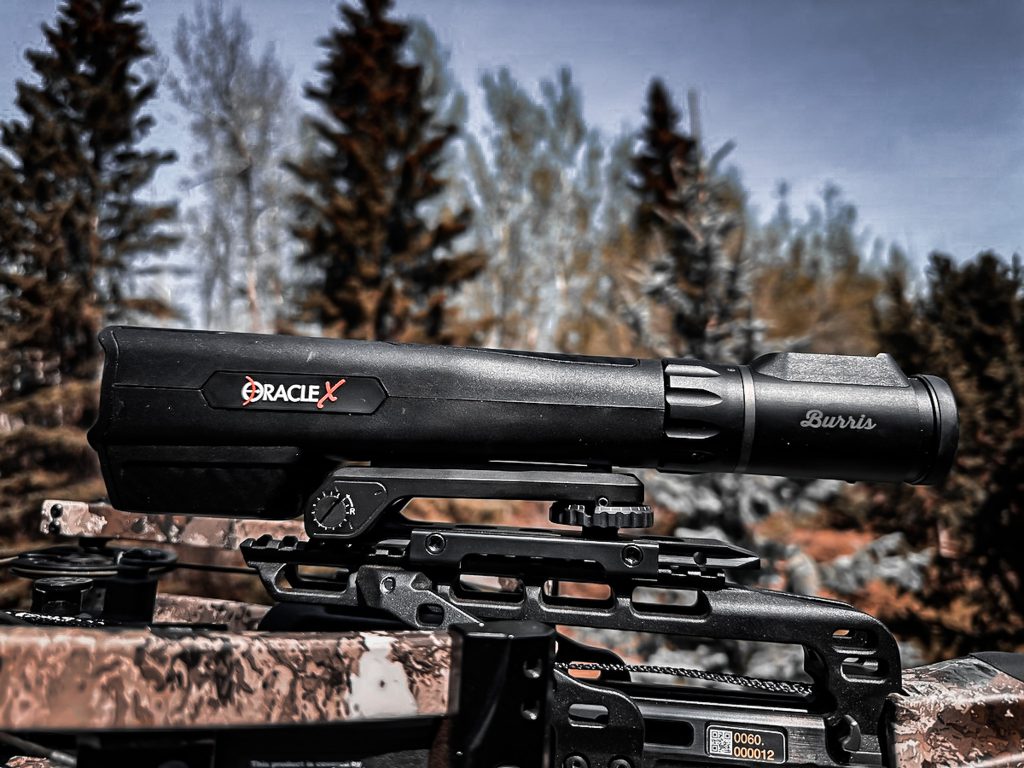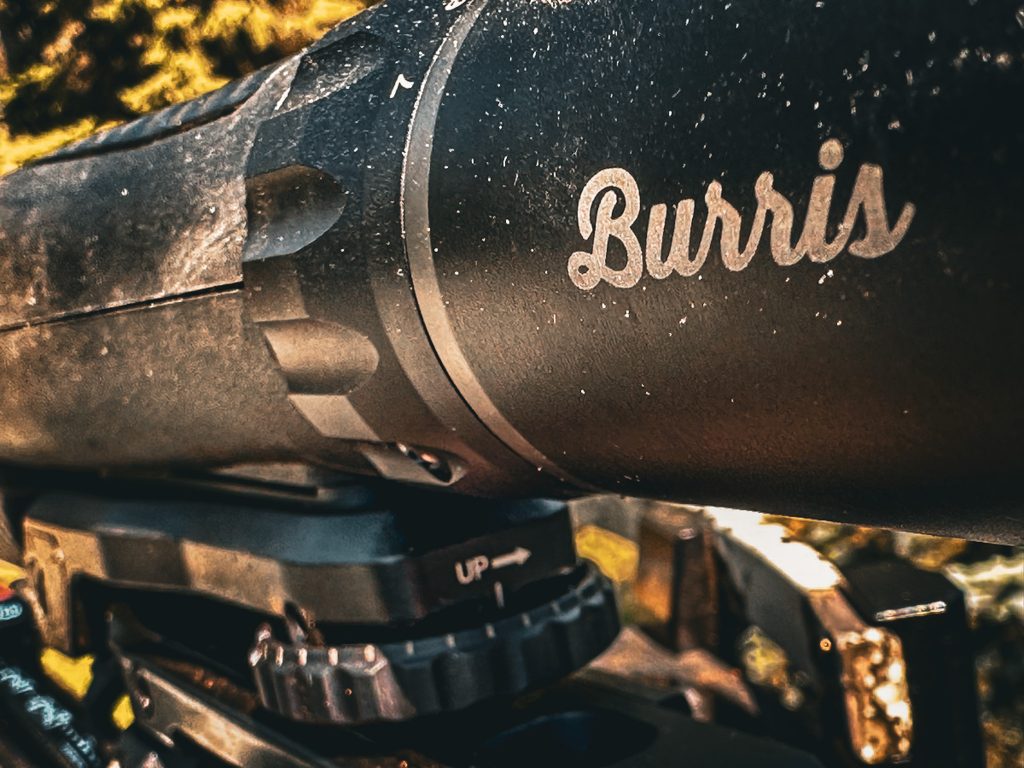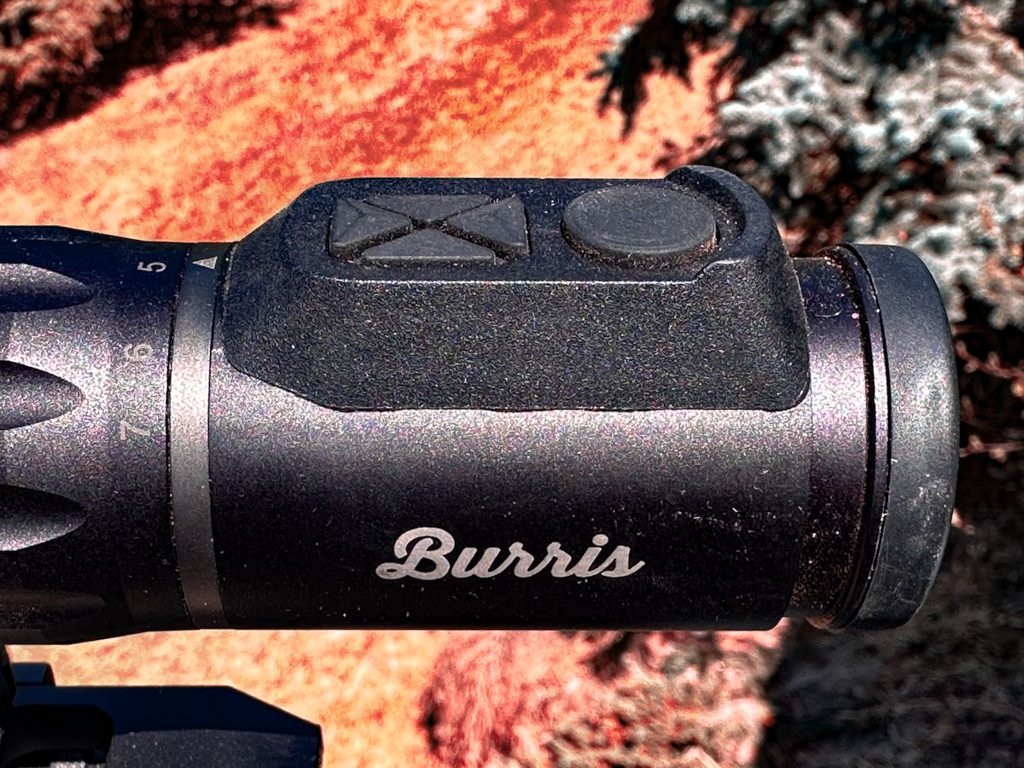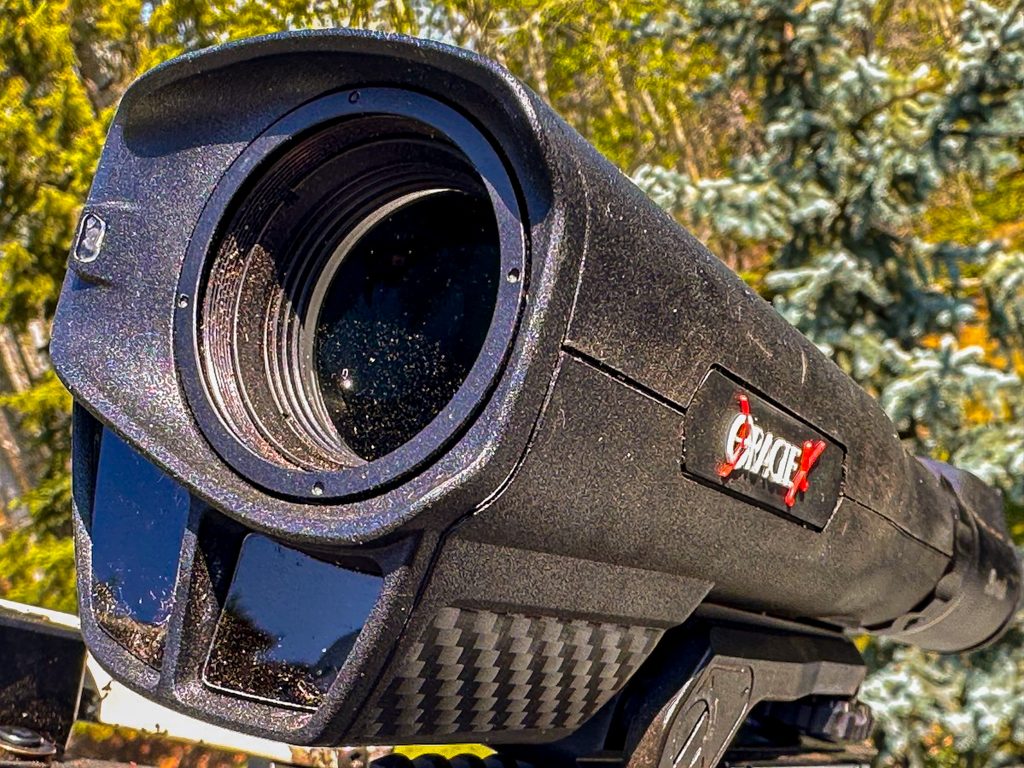An efficient, easy-to-setup and use crossbow scope that provides 2-7 power magnification and a built-in laser rangefinder activated via a wireless remote or by pressing the range button, the Burris Oracle X is a top-tier horizontal bow topper.
by Brad Fenson
I had my TenPoint Flatline 460 crossbow on shooting sticks and pointed in the direction I anticipated a shot opportunity. A springbok ram poked his nose out of the brush and strolled across the red dirt toward the watering hole. The ram stopped short of the water to graze, and I found him in my scope. A quick range button push lit up my scope, told me the ram was at 36 yards, and provided an exact-hold aiming spot.
I centered the aiming dot on the ram and slowly tightened up on the trigger. The bolt zipped through the vitals and skipped in the dirt about 60 yards beyond the ram. A short tracking job turned up our prize, and we shot some quick photographs with the sun setting behind us.

I had traveled to Africa to hunt with Mike Birch at Hunt the Sun. My crossbow made the trip across the Atlantic with me, and while I picked up a new rangefinding optic for my crossbow, there was no time to set up the Burris Oracle X before the hunt.
The first days in camp saw me head straight to the blind with the crossbow set up the way it was purchased, with an EVO-X Marksmen scope.
It did not take long for success, but the varying animal ranges made me wonder why I didn’t have the Oracle X on my bow.
We were in camp late the third morning. After watching me harvest several animals, my Professional Hunter (PH) was keenly interested in the crossbow. I quickly removed the EVO-X scope from the bow and set up the Oracle X.
Quick & Easy
It attached quickly to the Picatinny rail with two bolts, and I inserted the lithium battery to power it up. We grabbed the instructions to walk through the setup and had the optic shooting dimes out to 50 yards in no time.
Now, I have used many different optics on a crossbow and was pleased with the simplicity of the Oracle X instructions. I set up a profile for my CenterPunch 16-inch bolt with a 100-grain SEVR broadhead. We followed them and started with a shot at the target at 10 yards. The bolt hit low, and we used the elevation dial to raise the point of impact about 15 inches. Graduations on the dial indicate a ¼ minute angle (MOA) adjustment.

I recommend taking the first sight-in shot at 10 yards, not 20 yards. The close range helps with the target acquisition and fine-tuning and prevents lost or broken bolts.
We moved the target to 20 yards. It took three more shots to get the perfect elevation and one more to zero in the windage with the screw on the optic base, calibrated at ¼ MOA. Calibrating or “truing” the scope at four more distances began.
We moved the target to 30 yards and shot a bolt. The point of impact was about seven inches high. Pressing the button to calibrate or true the distance, two dots on the crosshair lit up. The lower one was aimed and held on the bull’s eye. The upper dot was moved to the bolt with the buttons on the scope.
It was easy to steady the crossbow and see the aiming point at the bottom and the calibration offset where the top dot covered the arrow nock to get a truing verification.
Back It Up
We moved the target to 40 yards and repeated the process. Once again, the bolt struck high, and the dots on the reticle were used to calibrate the distance. We shot two more bolts to confirm, and they were dead on.

We pushed the target back to 50 yards and did the same. My PH was taunting me to use a long distance to calibrate the crossbow. However, for hunting purposes, I prefer to keep shots under 50 yards. I will set up a second bolt profile in the optic to practice shooting longer distances. Shooting at 60-, 80-, or 100-yards is a great way to perfect your shooting form and trigger pull.
The targets don’t move, and the long-range shooting makes shorter ranges seem easy. However, too much can go wrong in a long-range hunting situation, and when I pull the trigger, I do not want to end up tracking a wounded animal.
We finished our calibrations and took turns shooting to verify the optic was dead-on accurate at any range. A quick lunch saw us return to the field for an afternoon and evening hunt.
In The Field
We settled into our blind, and I spent an hour aiming at different objects and hitting the range button. The scope has a range or “Fire” button on the top of the housing. A separate, wireless device with a small “Fire” button can be kept on a lanyard, in your pocket, or attached to your bow. I used Velcro tape to have the button on my crossbow stock right above the trigger. Without looking, I could hit the button to range an object and get the accurate distance reading and aiming point.

The springbok ram was the first animal to come in. It was wondering if it would take a little time to confirm the accuracy and dependability of the Oracle X — I had only played with the optic for a couple of hours. However, when the ram showed up, the rest seemed easy. I ranged the animal and tracked it until it stopped. When it turned broadside, I reconfirmed the range, put the aiming dot on the animal’s vitals, and slowly tightened up on the trigger.
It worked flawlessly. There was no fumbling to find a rangefinder and slowly set it down again. When opportunity knocked, the Oracle X made it fast, efficient, and accurate.
During the setup, the reticle needs to be focused. Look through the optic briefly and turn the focus ring until the reticle is clear and bold. Use blue sky as a background when possible to make the task easier and to see the detail of the reticle.
More Set Up Intel
The reticle display has a traditional crosshair with an extended vertical post running to the bottom of the sight picture. The extension provides the aiming dots that light up on the vertical post.
The Oracle X uses a CR123 lithium battery to provide about 3,000 range activations. Users can choose between yards or meters in the range indicator, and there is also a battery life indicator.
You can set up two different arrow or bolt profiles in the scope to provide options for hunting or shooting situations.

Information
The optic has lots of information in the eyepiece to help hunters and shooters be accurate. An integrated Inclinometer automatically factors in angles for shots in rugged terrain or from a treestand. An Electronic Bubble Level shows on the upper edges of the optic to remind the shooter about unwanted cant. There is no excuse to shoot a canted bow with the visual reminder in the scope. Auto-Brightness and manual adjustment allow you to fine-tune your aiming point and see the reticle under different lighting conditions. The optic has a minimum range of 5 yards, making it ideal for close and long-range hunting.
Final words
The Oracle X was developed from Burris’ experience with the Eliminator riflescope with rangefinding capabilities. The Oracle X features a built-in laser rangefinder activated via the wireless remote or the range button on the scope. The scope is adjustable from 2 to 7 power, and the aiming point stays accurate no matter the power.





